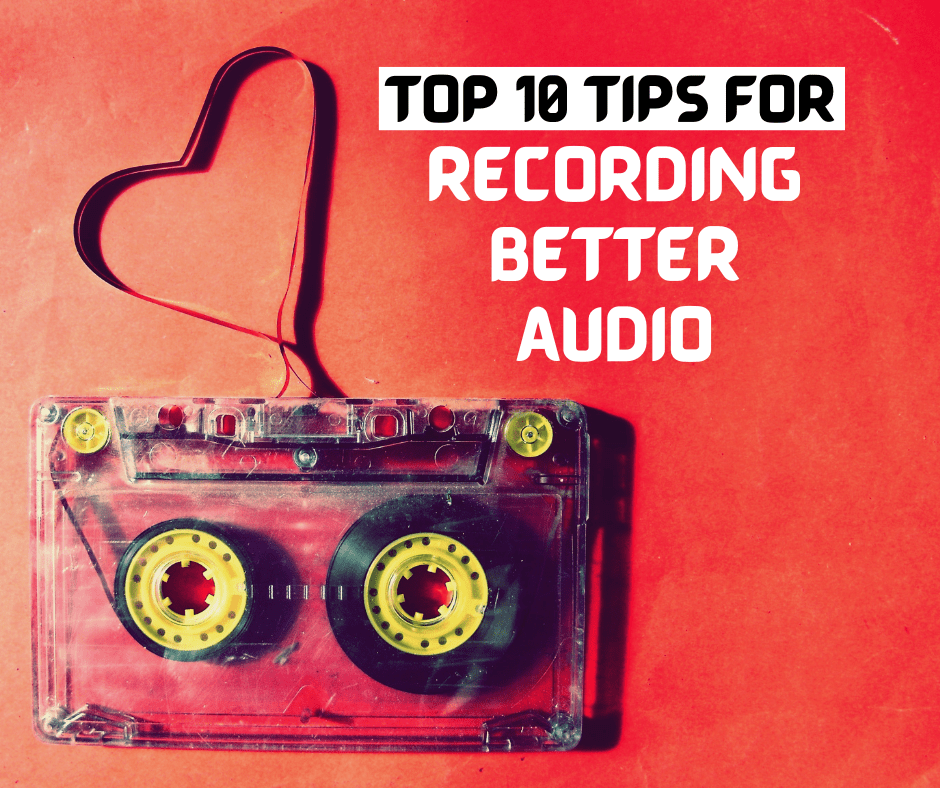Recording audio is not as easy as it seems. It requires a lot of knowledge and experience to get the best out of it. But with these tips, you can start recording better audio today.
1. Get a Good Source of Sound.
Recording good sound at home is not easy but can be done with the right equipment and knowledge.
Start by making sure that your space is acoustically treated so that you are able to control the sound. This means using thick carpets and heavy furniture, curtains for windows and doors, and sound-absorbing panels. Hanging blankets or other fabric on the wall can provide a good surface for absorbing sound as well.
If you plan on recording live instruments like guitars or pianos, you will need to invest in some acoustic treatment for the room in general. You may also want to invest in a microphone and preamp if you plan on recording vocals with a mic or instrument amplifier since they will provide better quality than your computer or phone’s native mics will.
2. Get a Session Together and Produce Good Quality Audio.
In order to produce good quality audio, you will need to have a session together with your team. This is the time when you can discuss your ideas and share thoughts on what needs to be done.
The first step would be to decide who will be doing what in the session. It is important that everyone agrees on this because it will make the process smoother and more efficient.
3. Make Sure Your Equipment is in Tune keywords: equipment tuning.
In order to play an instrument, it must be tuned. If the instrument is not tuned, it is not going to sound good. Your guitar or violin will only sound as good as the strings that are on it. If the strings are not in tune then your music will sound off-key and out of tune.
4. Prepare for the Worst and Test Your Signal Strength Beforehand.
This article will cover the basics of preparing for a disaster and signal strength.
The first step is to test your signal strength before the disaster strikes. This will give you an idea of how well you’ll be able to communicate in the event of an emergency. If you know that your signal is going to be poor or nonexistent, it’s important to have a plan in place for how you’ll communicate with loved ones during and after the emergency.
Next, we recommend storing up food and water for at least three days, as well as any necessities like medications or diapers that you may need if there is a prolonged power outage. It’s also important to have cash on hand so that if ATMs are down or cell phone service is unavailable,
5. Investing in an XLR Cable is Worth It!
XLR Cables are used in a variety of situations and contexts. They have been extensively researched to determine their benefits, which will be analyzed in this essay. They can connect instruments that require electrical power, such as amplifiers and mixers, to audio speakers. XLR cables are often used for connecting microphones to audio equipment for live performance or recording applications.
6. Check Your Settings – They Matter!
We want our microphone levels to be at an appropriate level so that others can hear what we are saying – but we also want to make sure that there is minimal background noise so that the content of what we are saying is not disrupted by an unwanted voice in the background.
7. If you want to record better sound, then you need to invest in quality.
A quality microphone will help you to record better sound. There are many microphones that are available in the market, but it is important to research before buying one. for yourself. If you are not good at recording the sound, then it is important to invest in a quality microphone. You can record your voice with the help of a quality microphone and bring out a better sound.
8. Use Sound Quality as an Indicator of a Good Recording sound quality and microphone level
Sound quality is a major indicator of the quality of a recording. If the quality is poor, then it could mean that either the microphone level was too low or the recording environment was not good enough. What is the difference between recording quality, recording sound, and microphone level? Recording quality means how well the recording sounds. Recording sound means recording a sound. Microphone level refers to the volume of voice that you are able to record when using a microphone at a certain distance from your subject.
9. Be Prepared to Record Multiple Takes.
The importance of capturing the perfect take can’t be understated. You need to be prepared to record multiple takes of your performance, and then go back and review it after the session.
Some people find that this is a very tedious process, and they often don’t have time to do it.
However, if you’re going to be recording your voice for a long period of time, it’s important that you are prepared by recording more than one take.
10. Recording with a Condenser Mic.
A condenser mic is a type of microphone that requires an external power source. It generates a voltage by converting sound waves into electrical signals. These types of microphones are more sensitive and produce clearer sound than dynamic mics.
Condenser microphones are often used in recording studios and live performances because they capture the most minute details, such as the singer’s voice, the background noise, or even the vibrations on a guitar string. They also have fewer feedback issues than dynamic mics because they don’t use any moving parts to operate.
The downside to condenser microphones is that they require phantom power (a battery or other power supply) in order to work properly. This means that if you want to use your condenser mic for an extended period of time, you need to make sure you have access to a power outlet or aux cable. Dynamic microphones, on the other hand, do not require phantom power and can be used anywhere without the need for an auxiliary cable/power supply.
5 Best USB Microphones for Podcasting
3 important things you will need to record in your home
If you have questions give Slick Audio a call at 570-371-5800.





